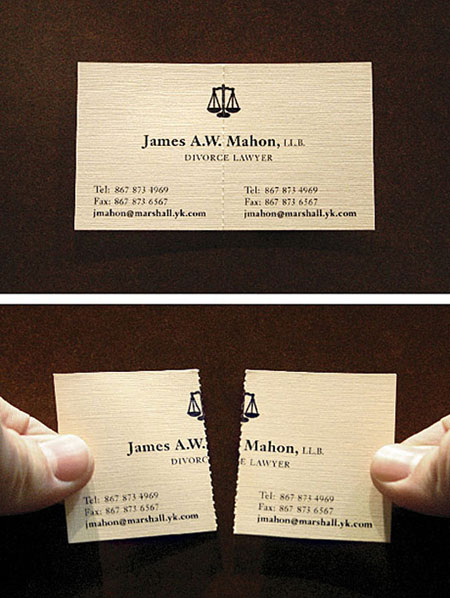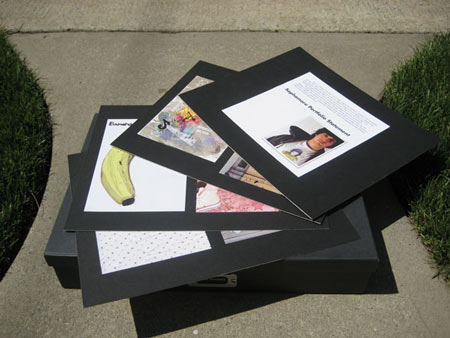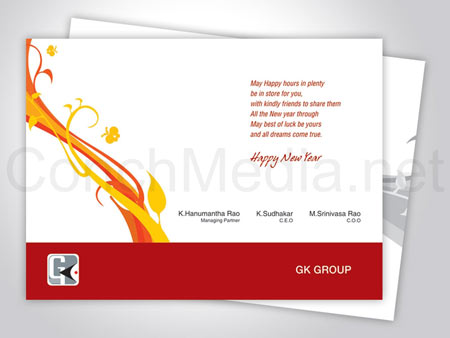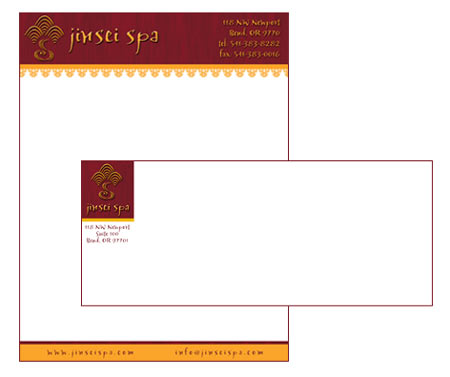Daily designer news |
| The printed material every freelance designer needs Posted: 18 May 2012 08:41 PM PDT In an era where digital communication took over print, some freelancers might be tempted to stop printing marketing material to cut down their costs. However, as tempting as it may be, it is probably not a very good idea. Some interactions with customers or potential customers will be better if they are done in a non-digital way. Following are some examples. Business cardsIf you only print one thing for yourself, make it the business card. As a normal, social human being, you should attend some clubs, networking events, or simply meet people in general. In those situations, the business card helps to keep in touch and makes you look more professional than writing your number on a piece of paper or calling each other to get the numbers. Make sure that you at least feature those things on your card: your name (duh!), email address, phone number, website. Of course you can add more, but these are the bare minimum. For some business card inspiration and ideas, I suggest that you take a look at those posts we featured on Designer Daily:
PortfolioYes, it’s good to have an online portfolio, it’s very important. However, if you are a graphic design, but even for web designers, it is mandatory to have a printed version of your portfolio. It is indeed rare to have no internet connection or computer (or smartphone) at hand, but it’s still a good idea to leave a printed version of your portfolio to your prospects. The printed version can sit on their desk whereas the online one will quickly be forgotten. Also, most older clients will still prefer to check out your portfolio quietly away from the computer.
Greeting cardsBefore anything else, people you work with are relationships. Like any other relationship, or even more than for others, you should try to be polite, thoughtful and well-mannered. One way to do it is to send snail mail to thank them when appropriate, to wish them good holydays, or whatever else that you should do if you are a polite human being. Greeting cards are a very handy way to make this task easier. Just have a stack of it ready, and don’t forget to do your duty when appropriate.
Envelopes/letterheadsI know, you surely don’t send letters very often anymore. However, when you do, you should do it with style. Be professional and get some well-designed letterheads and envelopes for when you send invoices or something else, maybe you’ll get paid quicker, who knows?
ConclusionAs you can see, there is not much that you need to print for your freelance business. It can help to make a difference to have this material, and it will not cost much. You can print those using your local print shop, online printing companies, or even your office printer. |
| Posted: 18 May 2012 04:06 PM PDT Propaganda serves to rally people to action, take up arms and fight, vote for someone or something, make a change socially or politically – propaganda is a relevant and effective tools used everyday by government and private industry. Do you believe smoking is bad for you? You can probably thank years of targeted propaganda for that. Unless you’re one of the few people that base all their decisions on fact and science, you probably feel a certain way towards smoking because of an anti-smoking campaign. Maybe everyone around you hates smoking too and that help, but it wasn’t always that way. 50 years ago smoking was regarded as healthy, mostly do to propaganda. These campaigns can shape the way society views issues and makes decisions. Recall the anti-smoking poster still in use today, “Mind if I smoke… Care if I die,” this suggests that because second hand smoke is so dangerous it’s alright to be rude to someone to prevent them from smoking around you. It uses charged language and glitzy glamorous images. The point is, this is just as much propaganda as anything we saw from the World War II era.
Propaganda is a style of communication with political intent, utilizing emotion and suggestion to sway opinion and action. While it can be misleading, it’s not always negative. When you look at the famous Hope Obama poster by Shepard Fairey from the 2008 campaign there are no facts, simply a feeling that this man will bring hope and change to America. For a more in-depth definition of propaganda visit Historians.org.
Creating dynamic and effective graphic pieces to sway someone’s emotions is key to advertising or even just getting a job in the graphic design field. An employer moved emotionally by your portfolio is more likely to remember you and call you in for an interview. So how do you harness the power of propaganda in your design? Start with the elements of propaganda.
Now that we have a clear frame work for what propaganda is it’s time to take a look at effective propaganda design and learn from the masters. J. Howard Miller's "We Can Do It!” is probably one of the most iconic pieces of war time propaganda. Created in order to encourage women joining the work force. Commonly mistaken for Rosie the Riveter. According to Ed Reis, Volunteer Historian for Westinghouse, as interviewed by California Federation of Teachers Publications Director Jane Hundertmark, February 5, 2003: "For the past 60 years, the popular image of the World War II-era female worker in the "We Can Do It" poster has evoked strength and empowerment. The American public identified the image as "Rosie the Riveter," named for the women who were popping rivets on the West Coast, making bombers and fighters for aeronautical companies like Boeing. But history tells a different story. In 1942, the Westinghouse Corporation, in conjunction with the War Production Coordinating Committee, commissioned the poster. It was to be displayed for only two weeks in Westinghouse factories in the Midwest where women were making helmet liners. They made 13 million plastic helmet liners out of a material called Mycarta, the predecessor to Formica (which means "formerly Mycarta"). So, more aptly named, this woman is Molly the Mycarta Molder or Helen the Helmet Liner Maker." Despite the confusion this image is synonymous with women’s empowerment and the feminist movement. That’s some powerful imagery.
Normal Rockwell, best known for his covers of the Saturday Evening Post produced quite a large body of war time propaganda images, including the original Rosie the Riveter. His illustration style is realistic and lends its self to deep emotional responses from viewers. This Save Freedom of Worship appeals to core American values like freedom and faith.
One aspect of propaganda imagery is the power, these images aren’t subdued, not something you’d hand in a nursery. Here’s a collection of powerful propaganda images from Lava360. Like this modern propaganda piece, done in an old soviet style based on the book Animal Farm. The block letters, the bold colors with high contrast just screams power and evokes emotion, no wonder designers are drawn to the style this style for posters about everything from events to video games (although not nurseries). With all this knowledge you’re ready to go out there and create your own powerful piece of design using these principles of propaganda. Check out Noupe.com’s propaganda design tool collection to get started with tutorials and make something memorable and emotional. Melody Stone writes and designs for Fibers.com, a custom t-shirt company based in Sacramento, Ca. When she's not manning her post at Fibers, likes riding her bike in dresses and high heels. |
| You are subscribed to email updates from Design daily news To stop receiving these emails, you may unsubscribe now. | Email delivery powered by Google |
| Google Inc., 20 West Kinzie, Chicago IL USA 60610 | |











No comments:
Post a Comment